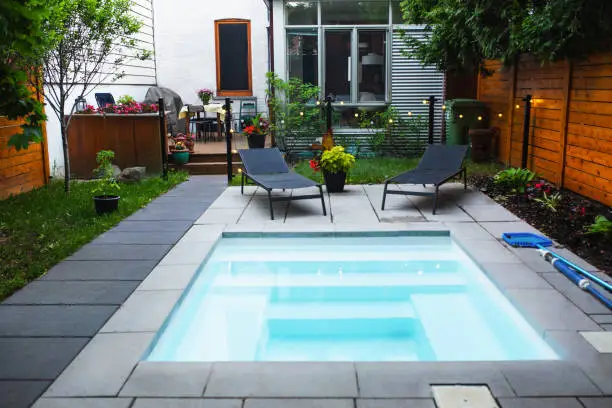In a city like Melbourne, where sunny days invite people to cool off and enjoy their pools, safety is paramount. Pool barrier compliance inspections play a pivotal role in ensuring that swimming pools are secure and abide by the safety standards set forth by legislation. These inspections aren’t just formalities; they are critical measures to prevent accidents and safeguard lives, especially those of young children who are particularly vulnerable around pools.
The Importance of Pool Barrier Compliance Inspections
The allure of a backyard pool is undeniable, providing a refreshing escape from the heat and a place for relaxation and recreation. However, this enticing amenity also poses significant risks, especially when safety measures aren’t properly implemented.
According to statistics, drowning is a leading cause of accidental death in children under the age of five. In Victoria alone, drowning remains a concern, with backyard swimming pools being a common site of tragic accidents. This sobering reality underscores the importance of stringent safety measures, including regular pool barrier compliance inspections.
Legal Requirements and Standards
Melbourne, like many regions globally, has strict legislation outlining the legal requirements for pool safety barriers. The primary legislation governing pool safety in Victoria is the Building Regulations 2018. These regulations specify the standards for pool barriers, emphasizing their role in preventing unauthorized access, particularly by young children.
Pool barriers must meet certain criteria regarding their height, structure, gates, latches, and other components. These standards are designed to ensure that barriers effectively prevent unsupervised access to the pool area. Ensuring compliance with these regulations is vital not just for adhering to the law, but more importantly, for safeguarding lives.
The Inspection Process
Pool inspections in Melbourne are conducted by authorized inspectors who thoroughly assess whether a pool barrier meets the prescribed safety standards. Homeowners or property managers must schedule these inspections periodically to ensure ongoing compliance.
During the inspection, the authorized inspector meticulously examines various aspects of the pool barrier, including its height, construction materials, gate functionality, latch mechanisms, and overall structural integrity. Any shortcomings or non-compliance issues are duly noted and communicated to the homeowner or property manager.
Common Non-Compliance Issues
Despite the clear guidelines, certain common issues often arise during pool inspections in Melbourne. These issues can range from minor oversights to more significant structural deficiencies. Some recurring non-compliance issues include:
1. Gate and latch problems: Gates not self-closing or self-latching, or latches not functioning correctly, leading to the gate being left open inadvertently.
2. Climbable objects near the pool: Objects near the pool that could potentially aid a child in climbing over the barrier.
3. Insufficient barrier height: Barriers fail to meet the minimum height requirements, providing inadequate protection against unauthorized access.
4. Damaged or deteriorating barriers: Wear and tear or structural damage to the barriers that compromise their effectiveness.
Addressing these issues promptly is crucial to ensuring compliance and maintaining a safe pool environment.
Consequences of Non-Compliance
Non-compliance with pool safety regulations can have serious consequences. If an inspection reveals deficiencies or issues with the pool barrier, the property owner or manager is usually given a specified period to rectify the problems. Failure to address these issues within the stipulated timeframe can result in penalties, fines, or even legal action.
Additionally, the safety of individuals, especially children, is at risk when pool barriers do not meet the required standards. Accidents or drowning incidents that occur due to non-compliant barriers could lead to devastating consequences and legal liabilities for the property owner.
Ensuring Pool Safety and Compliance
Maintaining a safe pool environment involves more than just passing inspections. It requires ongoing vigilance and a commitment to regular maintenance and safety checks. Homeowners and property managers should:
– Conduct regular self-checks: Periodically inspect the pool barrier to identify any potential issues.
– Address concerns promptly: If any problems are noticed, take immediate steps to rectify them to ensure compliance and safety.
– Stay updated with regulations: Keep abreast of any changes or updates to pool safety regulations to ensure ongoing compliance.
Conclusion
Pool inspections in Melbourne are not merely bureaucratic processes; they are essential safeguards to protect lives, particularly those of young children. Adhering to these regulations isn’t just a legal requirement; it’s a moral obligation to ensure the safety of individuals using or residing near swimming pools.
By understanding the significance of these inspections, addressing non-compliance issues promptly, and maintaining a proactive approach to pool safety, homeowners and property managers can create a safer environment around their pools, reducing the risk of tragic accidents and promoting peace of mind for all.






